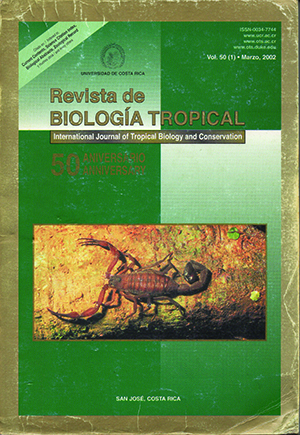Abstract
A comparative study was performed on the venoms of adult specimens of the neotropical rattlesnake, Crotalus durissus, from Guatemala, Costa Rica, Venezuela and Brazil, together with the venom of newborn specimens of C. d. durissus from Costa Rica. Venoms from Brazil (C. d. terrificus) and from newborn specimens of C. d. durissus presented an electrophoretic pattern characterized by the predominance of bands with molecular mass of 36 and 15 kDa, whereas those of adult specimens of C. d. durissus from Guatemala and Costa Rica, and C. d. cumanensis from Venezuela, showed a conspicuous band of 62 kDa, and additional bands of 36, 29 and 15 kDa. Moreover, venoms from C. d. terrificus and C. d. cumanensis showed a prominent band of < 10 kDa that probably corresponds to crotamine, since a ‘crotamine-like’ activity was detected in these venoms upon intraperitoneal injection in mice. Venoms of C. d. terrificus, C. d cumanensis and newborn C. d. durissus induced higher lethal and myotoxic effects than those of adult C. d. durissus. In contrast, adult C. d. durissus and C. d. cumanensis venoms induced hemorrhage, whereas venoms of C. d. terrificus and newborn C. d. durissus lacked this effect. All venoms showed coagulant effect in plasma, the highest activity being observed in the venom of newborn C. d. durissus. An anti-crotalic antivenom produced by Instituto Butantan (Brazil), using C. d. terrificus venom as antigen, was effective in the neutralization of lethal, myotoxic and coagulant effects of all venoms studied, being ineffective in the neutralization of hemorrhagic activity of the venoms of C. d. cumanensis and C. d. durissus. On the other hand, a polyvalent antivenom produced by Instituto Clodomiro Picado (Costa Rica), using the venoms of C. d. durissus, Bothrops asper and Lachesis stenophrys as antigens, was able to neutralize lethal, myotoxic, coagulant and hemorrhagic effects of C. d. durissus venom, but was ineffective in the neutralization of lethality and myotoxicity of C. d. terrificus, C. d. cumanensis and newborn C. d. durissus venom. The high toxicity of South American and newborn C. d. durissus venoms is related to the presence of high concentrations of the neurotoxic phospholipase A2 complex ‘crotoxin’. Accordingly, antivenom from Instituto Butantan has a much higher titer of anti-crotoxin antibodies than antivenom from Instituto Clodomiro Picado. Crotalus durissus represents an example of intraspecies variation in venom composition and pharmacology that has relevant pathophysiologic and therapeutic implications.
This work is licensed under a Creative Commons Attribution 4.0 International License.
Copyright (c) 2002 Revista de Biología Tropical

